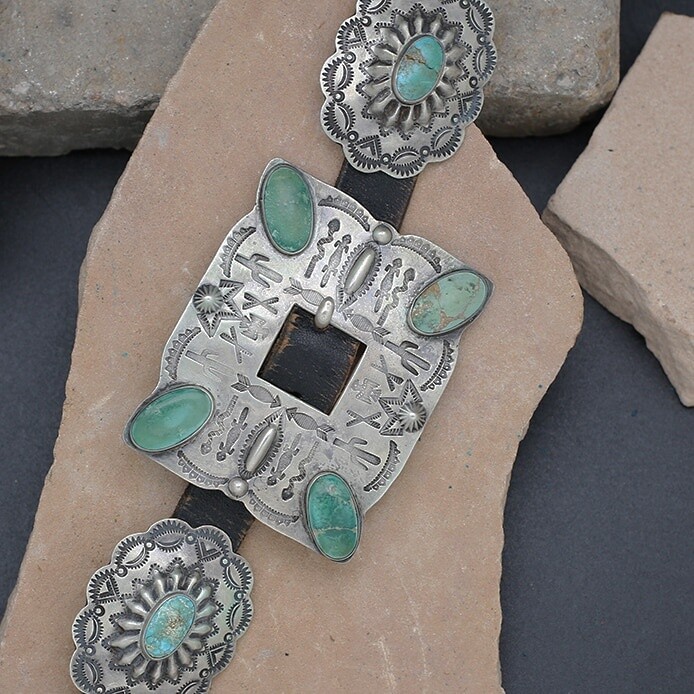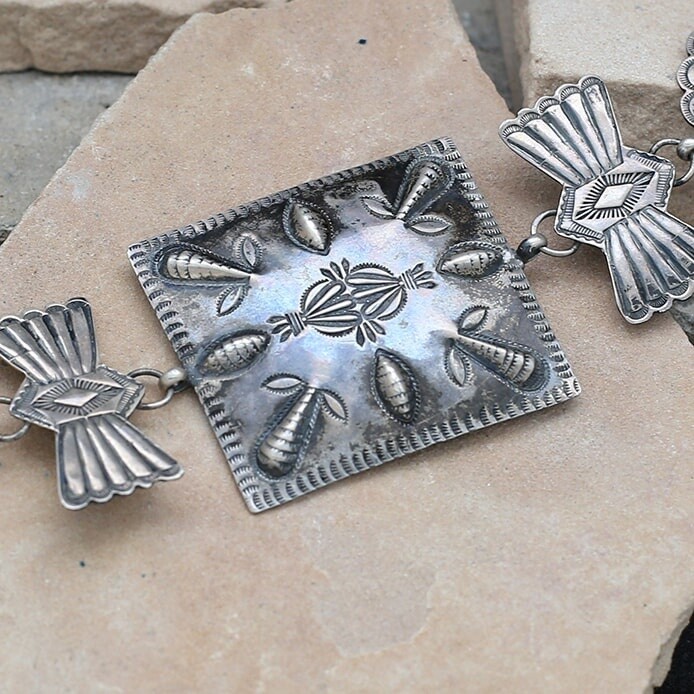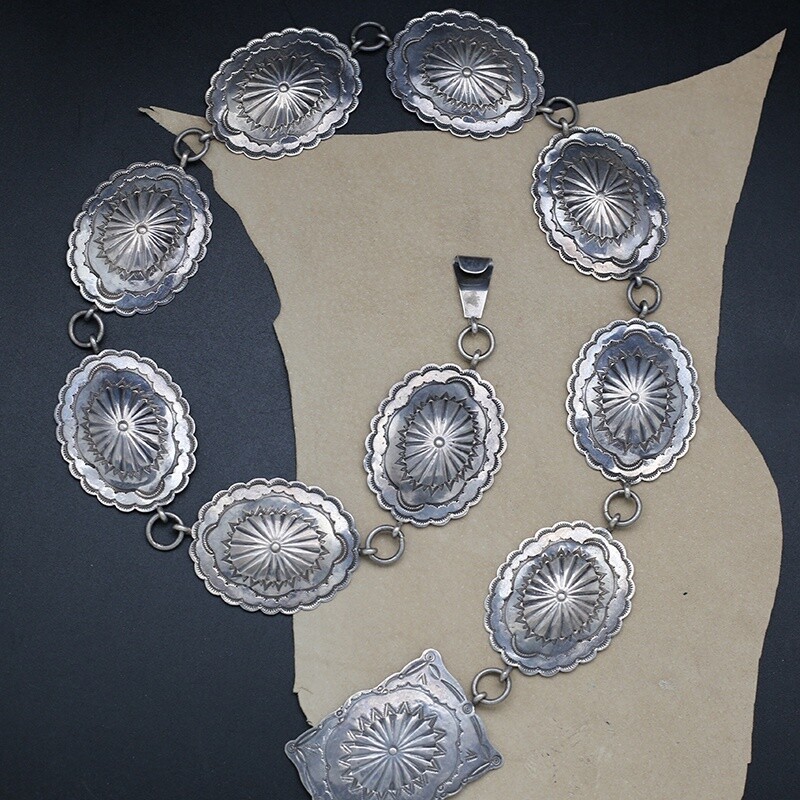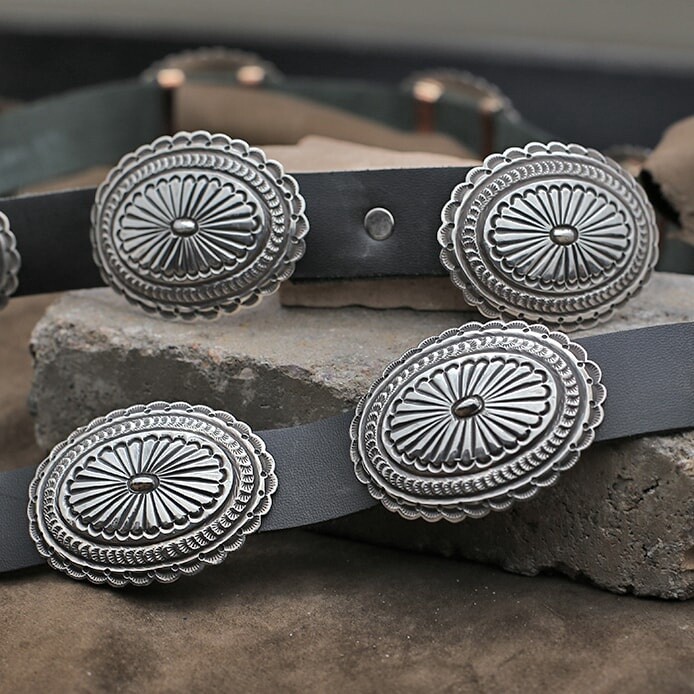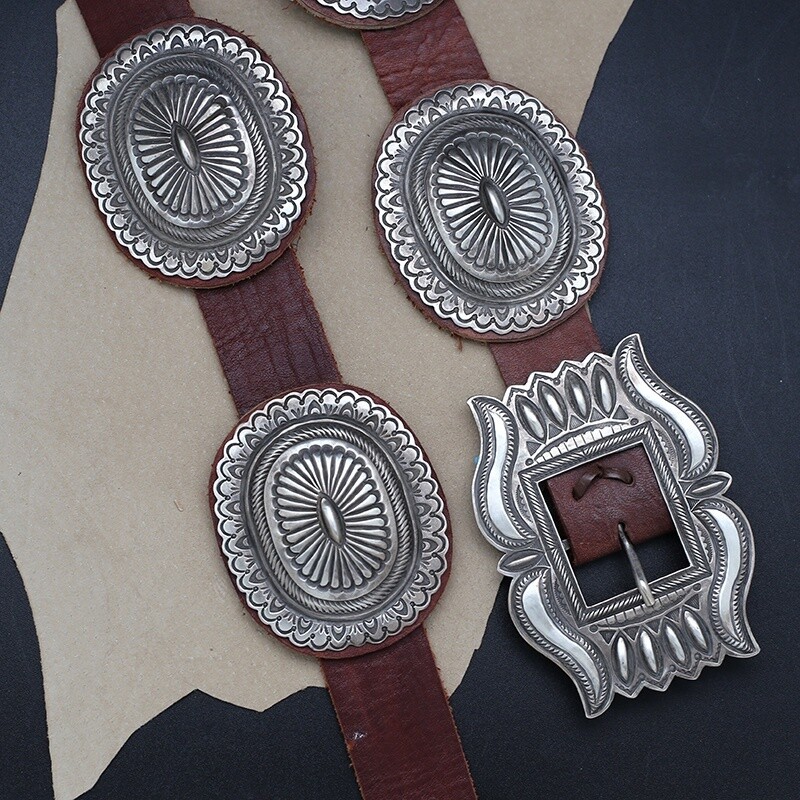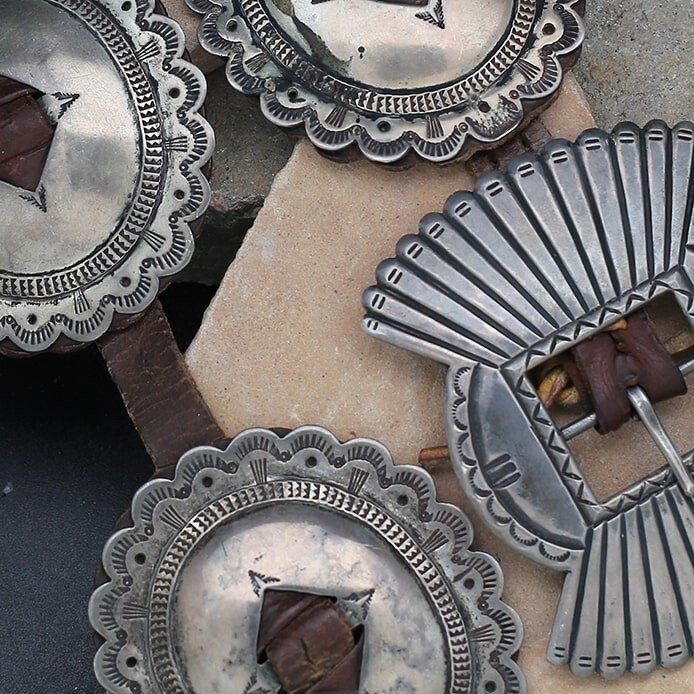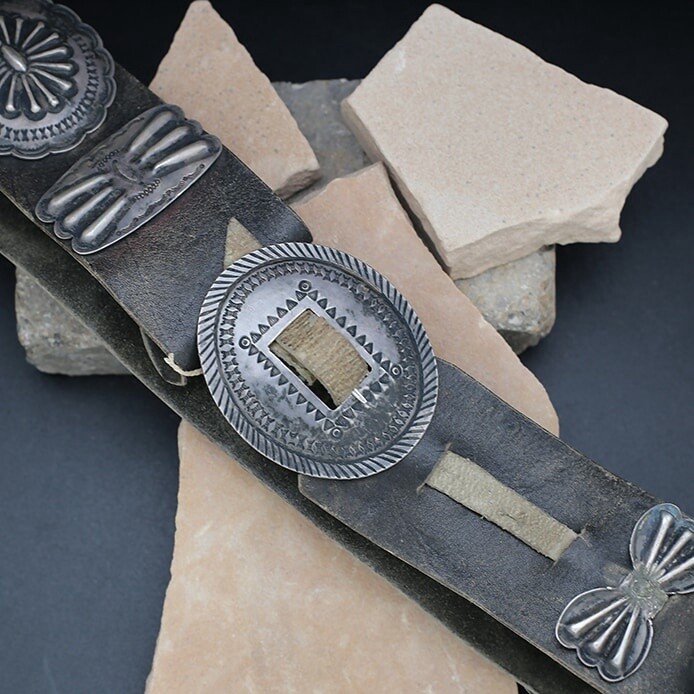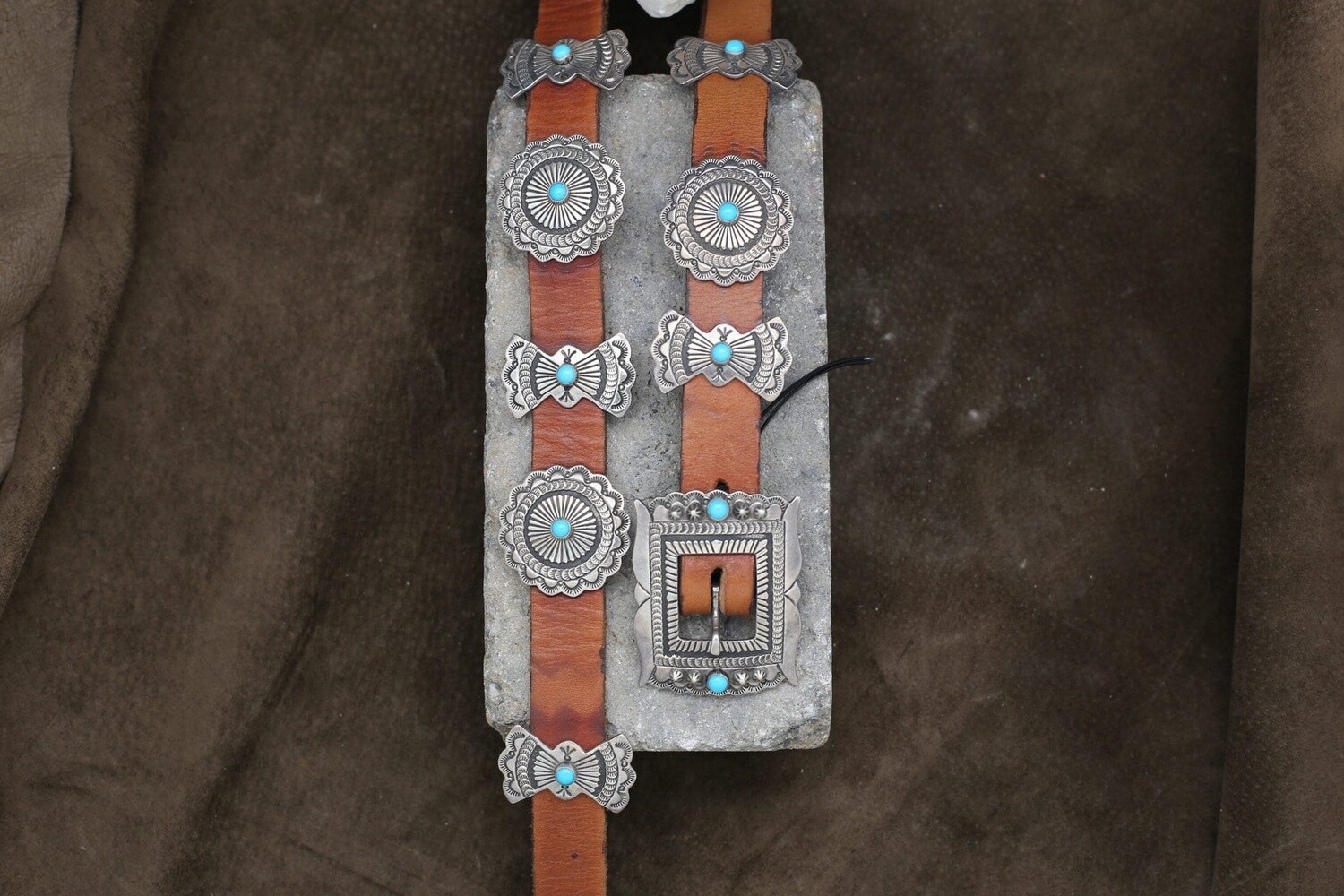Concho Belts
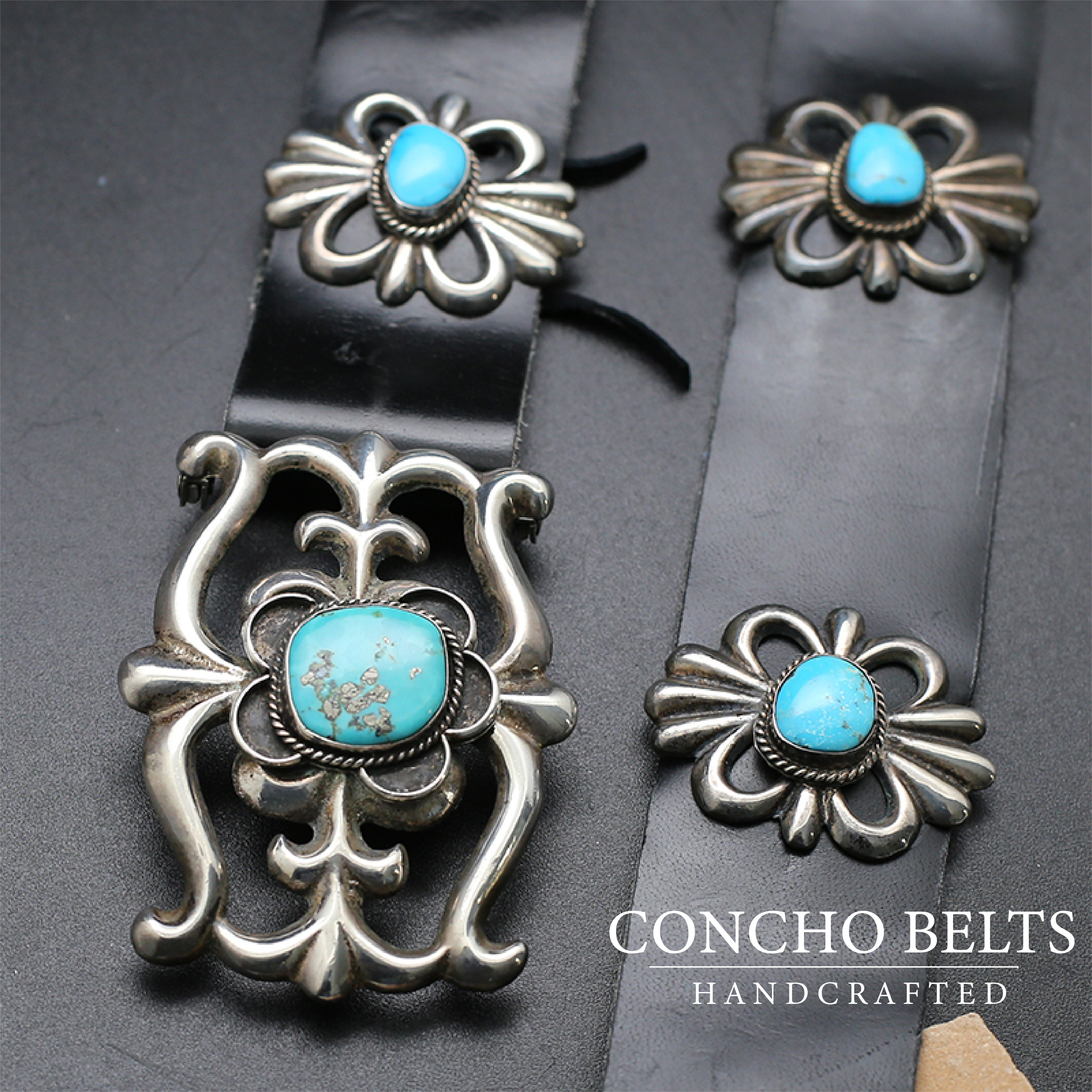
We present our exquisite collection of Concho belts, perfect for those who appreciate fine craftsmanship and cultural heritage. As a family-owned business spanning three generations, we are dedicated to offering southern Arizona's largest selection of vintage and traditional Native American jewelry.
About Our Concho Belts Collection
Our Concho belts showcase the artistry and cultural significance of Navajo, Zuni, and Hopi traditions. Originally crafted from melted silver dollars and even sterling silver ware, these belts feature intricate silverwork and occasional turquoise accents. The designs blend early Spanish and Plains Indian influences, creating pieces that are both functional and rich in heritage. Every belt in our collection showcases the remarkable craftsmanship and unwavering commitment of Native American silversmiths.
We offer a diverse range of belts, each produced with the highest standards of authenticity and quality. These are not just accessories but pieces of wearable art that reflect the historical and cultural importance of Native American jewelry. By choosing a Concho belt from Spirit of Santa Fe, you support preserving these important cultural traditions and the livelihoods of the artisans who create them.
